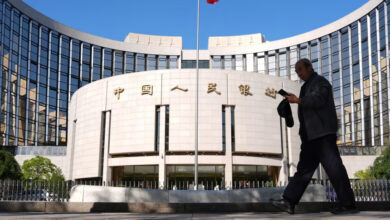Happy Hour: A time of the day when alcoholic drinks are sold at a reduced price.
It quickly became clear that in Vietnam, the definition of happy hour takes on a much broader scope. Here, across this long, thin strip of land containing 86 million people, street sellers touting bracelets, peanuts, water, T-shirts, and just about every other sellable item, also advertise their “happy hours.” Whether prices are actually cheaper during such times is another matter.
Nevertheless, my travel partner and I, having just flown into Vietnam’s capital Hanoi from Laos, were determined to make every one of the 192 hours we had in Vietnam as happy as possible. But time was against us: Starting in the north on Christmas Eve, we planned to make the 1700 km journey down to Saigon in time for New Year’s Eve, taking in as much of Vietnam as we could while we worked our way south.
Hanoi and Halong Bay: from scooter mania to majestic beauty
Vibrating with the roar of seemingly zillions of little scooters, and possibly outdoing Cairo’s own sense of chaotic liveliness, it might be best to reserve judgment on Hanoi until having spent a couple of days there.
In our case, after waiting an extra half hour at Hanoi’s international airport, where my strange, oversized Egyptian passport was manhandled by half a dozen officials trying to decipher the passport number and nationality, we were off to experience Hanoi’s most common scam.
In the hope of avoiding the scams our guidebook warned us about, we coughed up 150,000 dongs (US$8) to get an official airport taxi to take us to our central hotel. Thirty minutes later we found ourselves right in the midst of one: the taxi driver who takes you to the equivalent of a bootlegged copy of your original hotel.
“You have reservation?” asked a young, mischievous looking man who appeared out of nowhere to open our taxi’s door. The streets around us looked sullen and tourist-free, and our suspicions grew stronger when the man showed us a dusty old business card with our hotel’s name printed on it. There is not much you can do at this point but insist to the driver in an increasingly louder voice on being taken to your correct address–which we eventually were.
Finally reaching our destination in Hanoi’s Old Quarter, just north of lake Hoan Kiem, we found ourselves in a maze of one-lane–but multi-directional–alleyways crisscrossing each other to make what is possibly one of the busiest, loudest areas on this side of the galaxy. Food vendors were lined up next to pirated DVD stores and tourist agencies, with pubs and fancy cafés interspersed among the bedlam of gratuitous beeping and endless congestion. Yes, the traffic and its lax rules made Cairo appear tame at times.
The lake itself, surrounded by a promenade dotted with benches, is a meeting ground for both families and quite openly intimate couples. On Christmas Eve, however–a big deal in a country with a Christian population of almost ten percent–the promenade was packed with enough roving people to make circling the Kaba during Hajj seem a relatively relaxed affair.
In Hanoi, as in much of South East Asia, you can eat to your heart’s delight when it comes to street food. Bad hygiene is rarely an issue, and the cost is so little it actually makes the food taste somehow even better. Yet if you require a gourmet experience, our number one recommendation has to be Green Mango, Hanoi’s hippest hang out with food to match, and Tamarind Café, offering an eclectic menu, though–snobbishly–accepting only US dollars.
As for drinks, if you are thus disposed, be sure to try Hanoi’s bia hoi: a freshly brewed, preservative-free pilsner beer. Head to “bia hoi junction” in the heart of the old quarter and choose your pick from three thriving bia hoi establishments, or, better yet, stumble from one to the other. The brewing technique was first introduced in Vietnam by Czechs, and while it’s a flavorsome affair, be forewarned: at 16 US cents a (big) cup, you are guaranteed to suffer alcohol poisoning far before you run out of money
While tourist sites abound in Hanoi–the Ho Chi Minh Mausoleum and Museum being key–be sure to take at least a day trip east to Halong Bay, a UNESCO World Heritage site sure to challenge any preconceptions you may have about natural beauty.
At the bay’s heart, 775 islets rise dramatically, formed from limestone which the wet tropical climate pounded down over a period of 20 million years. Depending on who you book with, a day trip including several hours of cruising through the bay on a boat and visiting a couple of caves, can cost as little as US$19, or as much as US$80. Going for the cheaper option leaves one open to the risk of scams, while the more expensive option has the advantage of seriously fine dining and smaller groups.
The way south
Traveling from the north to the south of Vietnam can be a straightforward business if you do not suffer from claustrophobia or have serious issues with the smell of wet socks. For around US$45, you can get an open tour bus ticket which will take you all the way from Hanoi to Saigon, dropping you off at several key destinations along the way. Stay at each for as long as you want, a day or a week, then hop on the next daily bus heading further south whenever the whim to move on strikes.
Our first such bus trip was to the small town of Hoi An, approximately 13 hours south of Hanoi. The above reference to claustrophobia has to do with the fact that each passenger has their own coffin for comfort: Think of a bobsled for children, which you have to squeeze into to be able to stretch your legs out and lie back. Each row in the bus has three of those bobsled-shaped seats lined up next to each other. Then add another level for the bunks above. Not a fun ride if you are tall.
Hoi An, once a sleepy riverside village, was transformed into a buzzing tourist town in the mid-1990s when visitors began to fall in love with the distinctive and supremely intact architecture of its Old Town. Blissfully car-free, walking through its narrow streets and past the UNESCO heritage site houses, you can easily imagine bygone times of a couple of hundred years ago–though such fantasies are not likely to last long in the presence of tourist touts.
Yes, there is something quite dreamlike about Hoi An, but let it be said that within a period of 30 minutes, we counted more than 40 instances in which we were accosted by tourist touts offering “happy hour” prices for water, food, trinkets, books, clothes, or suggesting boat, taxi or scooter rides.
However, if you’ve had enough of the Old Town and its mindboggling selection of riverside restaurants and pubs (try Good Morning Vietnam for some surprisingly good Italian food if you’ve had enough of noodles and rice), you can rent a scooter for US$5 a day and head a few kilometers east for the beach. Sip on a cold coconut and catch some rays.
Saigon or Ho Chi Minh City?
Known as Saigon to all but a few crusty city officials, Vietnam’s largest city is a metropolis of gargantuan proportions. The city was formally renamed in honor of the North Vietnamese leader Ho Chi Minh, immediately after the communist takeover of South Vietnam in 1975. Though Ho Chi Minh died six years before he could see the victory of the North, the communist revolutionary remains preeminent, having led the Viet Minh independence movement against the French, and he continues to be regarded as close to a deity by many Vietnamese.
Today, the city bearing his name appears anything but communist, with shopping malls, luxury stores, gourmet dining, fancy nightclubs, and the stamp of capitalism evident on every corner of the city’s center. New, flashy skyscrapers are rising on every block.
Saigon’s younger generations seem to pulse to a more liberal agenda, with the city’s entire main road transformed on New Year’s Eve into a pedestrian zone pumping music from the likes of the Black Eyed Peas to dancing youth. Curiously, the celebrations were inexplicably cut short, and by 12:20 AM people were disappearing home while street sweepers materialized in the dozens to clear the leftover waste away.
More than any other city in Vietnam, however, Saigon stands alone in having seriously must-see museums. Primary among these is the War Remnants Museum, once called the Museum of American War Crimes. Disturbing as it is illuminating, here you get to witness the “other side of the story” of the American phase of Vietnamese War. Be warned: you may feel a bit queasy at points.
Also well worth the visit is the Reunification Palace, whose gates were famously brought down by North Vietnamese tankers on 31 April, 1975, marking the beginning of the end of the north-south divide of 21 years. The best way to get to these places, aside from walking, is to hop on a moto. For less than a dollar you can sit behind a scooter driver who will take you to your destination relatively safely, while raising your heart rate as he cuts through traffic to make sure you don’t get bored at any point.
Moving on
Unfortunately, time dictated that we could only see one side of Vietnam, the largely urban side. For many travelers, the real beauty of this country lies in the central highlands, away from the endless beeping and the more “in your face” characteristics of Vietnamese city people. Nevertheless, from what little we did see, Vietnam certainly stood out as warranting another future visit. But for now, Cambodia beckoned.




